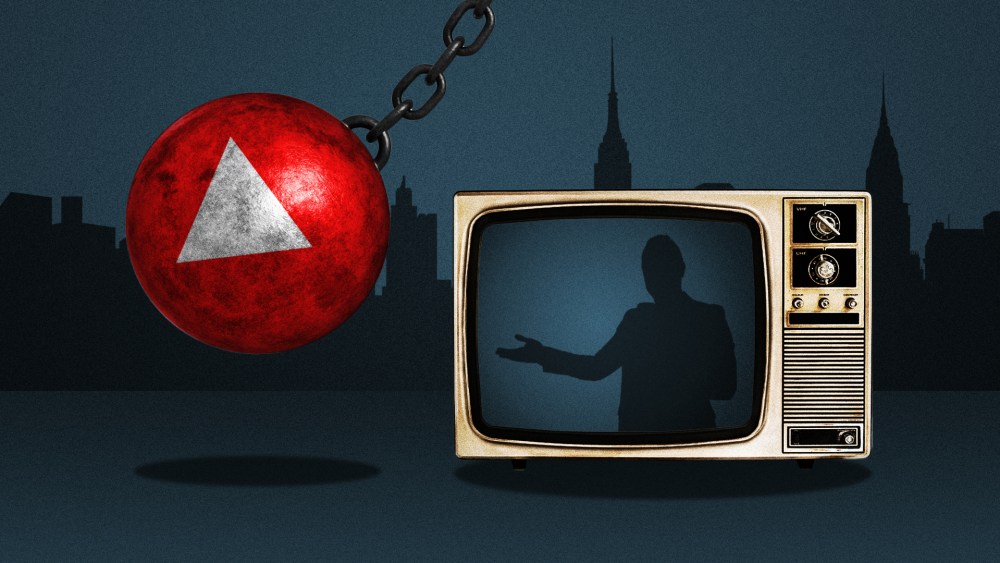In the days before the internet, Hollywood’s go-to marketing strategy for a given movie or film was relatively simple: Set up press junkets for a revolving door of short interviews, and book the leads on late-night talk shows for longer chats.
Increasingly, press tours for today’s blockbusters involve A-list actors appearing in online shows posted to YouTube more often than, or even instead of, making the late-night rounds.
This category is an ever-growing grab bag of push-the-envelope segments from internet entertainment studios such as BuzzFeed and Mythical, homegrown talent and influencers, old-media publications that have made the jump to digital content and even celebs with their own YouTube channels.
An actor might promote a new movie by being interviewed while enduring a series of increasingly searing hot wings, ponder mortality over their hypothetical last meal, break down their career or address Google search results while sitting in a white void or just play with dogs — sometimes all within the same window.
Late night, meanwhile, is shrinking: “The Tonight Show,” the longest-running late-night show of all time, will now be airing four nights a week instead of five. Earlier this summer, “Late Night With Seth Meyers” axed its live house band due to budget cuts.
But even as TV viewership continues to decline, the late-night daypart can still play a role in movie promotion via the shows’ official YouTube channels, on which episodes are broken into shorter clips and usually uploaded the day after airing. But these are now in direct competition with the YouTube-bred content that books A-list guests and generates substantial buzz.
So how does late night stack up against the new guard of online-exclusive shows? To answer this question, we looked at the publicity campaigns for three recent summer blockbusters — “Deadpool & Wolverine,” “Twisters” and “Beetlejuice Beetlejuice” — and tallied the clips that came from online shows and those culled from late-night TV. (Generic press junket interviews weren’t counted.)
Using Tubular, we found the top 10 most watched press videos for all three movies and collected viewership and engagement data for the 1st, 7th and 30th day of each video. For the videos that had not yet been published for 30 days at the time of data collection — namely most of the “Beetlejuice 2” videos — we looked at the numbers as of Sept. 15.
All three films took distinctly different promotional strategies. And while late night played a role in all, the format is ultimately outpaced by online-only appearances in both total views and engagements.
“Deadpool & Wolverine”: All-In Online
The press run for Marvel’s latest megahit reads like a shortlist of what YouTube considers its premier shows, as stars Ryan Reynolds and Hugh Jackman were seemingly all over YouTube throughout July. Genres such as superhero films and sci-fi tend to be popular online, and the “Deadpool” franchise has a particularly strong online following, so it’s not surprising that the film leaned hard on YouTube-based shows for promotion.
Leading up to and following the film’s release, Reynolds and Jackman appeared on poultry-centric interview shows “Hot Ones” and “Chicken Shop Date,” cuddled with puppies for BuzzFeed, took lie detector tests with Vanity Fair and played a smattering of games — Never Have I Ever and the Newlywed Game, to name a few. Their late-night TV appearances, meanwhile, included interviews and activities on “The Tonight Show Starring Jimmy Fallon” and a co-hosting gig on “Jimmy Kimmel Live!”
Looking at the top 10 promo videos, the first-day views and engagements for the online-only videos featuring Reynolds and Jackman immediately outpaced the official late-night clips. After 30 days, the late-night ones generated around 20% of views and 14% of engagements from online-only shows.
“Twisters”: Banking on its Stars
A sequel coming nearly three decades since its predecessor, “Twisters” provides a case study in how to navigate rebooting a well-liked but dormant franchise — an increasingly common situation in Hollywood.
The new film didn’t rely on the brand recognition of the 1996 original for its promotional rollout. Instead, the marketing leaned into the recognition of stars Glen Powell and Daisy Edgar-Jones, two actors with strong social media presence and Gen Z appeal.
The result is that, like “Deadpool & Wolverine,” the majority of top 10 promotional video views and engagements came from online-only sources including “Hot Ones,” BuzzFeed and Vanity Fair. Only 7.3% of total 30-day views for came from appearances on “Late Night With Seth Meyers” and “The Tonight Show.”
“Beetlejuice 2”: Throwing TV a Line
Despite also being a legacy sequel and starring another Gen Z favorite, Jenna Ortega, “Beetlejuice Beetlejuice” differed from “Twisters” by prioritizing older nostalgic audiences in its marketing.
As such, the weeks leading up to the film’s release mainly involved its 1980s-era stars making appearances across daytime and late-night TV (Jenna Ortega still played with puppies, though), likely to reach those who were around for the 1988 original.
It was only the week of the film’s release that online-only videos from GQ, People, Wired, Vanity Fair, Recess Therapy and others started going live — including a “Hot Ones” parody posted by Warner Bros.
While the online-only videos ultimately outpaced the TV clips, the viewership and engagement gaps between the two categories are noticeably smaller than those of “Deadpool” and “Twisters.” Most of the clips haven’t been out for 30 days yet, but as of Sept. 15, the TV clips within the top 10 most viewed promo videos have accumulated about 47% of the top online-only clips’ views.
“Beetlejuice Beetlejuice” shows that late night still has a place in movie press tours, albeit one that’s diminishing as TV viewership shrinks. YouTube, meanwhile, is a bona fide streaming destination for TV viewers, with its top creators producing more professional, advertiser-friendly content than ever for their massive audiences.
No matter the type of film or targeted audience, if studios want to reach as many potential moviegoers as possible, then YouTube is currently one of the best platforms.
It’s a reflection of YouTube’s growing dominance over traditional media in the battle for viewers’ attention — both online and on TV. Nielsen’s latest Gauge report revealed that YouTube finally overtook Disney as the most viewed media company on TV in July, making it the first online streaming company to surpass 10% of monthly TV usage.



